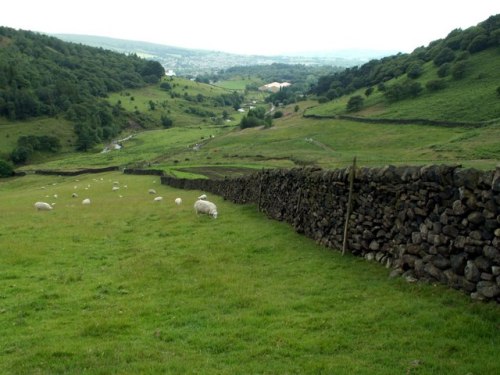
Stones once set off private property. Photo: John Fielding. Used with permission.
In a piece called, “This Land Is Your Land. Or Is It?” Justin P. McBrayer uses the occupation of the Malheur National Wildlife Refuge in Oregon as a jumping-off point to question some of the most pervasive assumptions about private property, including how it comes to be, and the moral standing of one’s claim to ownership. Challenging the idea that history illuminates claims, he writes:
What are the chances that the money you used to buy your phone can be traced backward through your employer, your employer’s customers, and so on back through history without passing through the hands of a serious injustice? Slim to none. The same can be said for the seller’s side of the transaction. Chances are excellent that your phone arrived in your hand only after the exploitation of workers, abuse of the environment, theft, fraud, human trafficking, or any number of deal-breaking injustices.
This is true. It is especially true of currency, which passes through so many iterations of title, often in short periods of time. But even with tangible or intellectual property, and especially with land, a good number of today’s titles were created or have changed hands since their creation via some form of trickery or theft. Knowing this to be the case, one of the major challenges of property law is to determine when, if ever, the law should throw its weight behind a private claim to ownership. One could make the argument that the presumption ought to be against such claims; that the burden of proof should fall on the person in possession who seeks to claim anything more than mere possession. To some extent, this burden already exists. Buyers take title at their own peril, hence, the need for title insurance. But the burden could be greater. Good title, itself, could have to be proven against the presumption of historical wrongs, before it could vest. That is to say, the moral rationale that underpins legal title could have to be proven by the one claiming ownership.
One inevitable result of such an approach would be to have much more property in common ownership. That is to say, such a burden would be so difficult to meet that, were it to be established as a requirement, nearly everything in private hands would default to the commons. From a socialist viewpoint, this mass erosion of title might seem desirable, providing as it would a basis for tearing down claims to private property that are undoubtedly dubious, but that nonetheless, because they are supported by legal presumptions, provide the basis for real economic and political power in the present time. But, as with most attempts to legislate an ideal, such a structure would present its own host of difficulties through its intrinsic conflicts with human nature. The human propensity to fight over property creates powerful incentives for the law to sanction and settle who has title to what, without necessarily examining the immemorial chaos that has gotten us to the status quo. By decisively recognizing titles, and presuming that possession can be equated, in most cases, with recognizable ownership, the law averts an infinite number of potential conflicts, and creates incentives for individuals to acquire wealth peacefully, rather than by force.
This compromise, like most law, remains both logically and morally imperfect. But, so what? If, as Holmes famously remarked, the path of the law is experience, not logic — that is, if there is no perfect answer to the power struggles that characterize life within civilization that can be reconciled with what we know of human nature — then why shouldn’t practicability have the last word on these matters, at least when what is most practicable is not in direct conflict with any fundamental moral consensus? From such an angle, the current system of private property titling is actually quite defensible, so long as there is sufficient opportunity in the marketplace for those who act legally and peacefully to acquire enough private property for the system of incentives to work. With this caveat, the system largely keeps the peace and provides incentives for individuals to work, invest, and improve their property. The practicable imperative, therefore, is not to divest a large number of economic stakeholders of their admittedly dubious but nonetheless socially stabilizing claims; it is to ensure that enough economic opportunities exist for others, still in line, to ensure that existing claims do not become the obsessive objects of jealousy and scrutiny.

